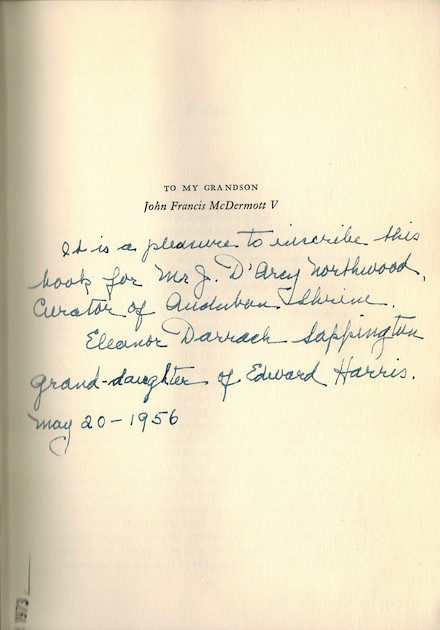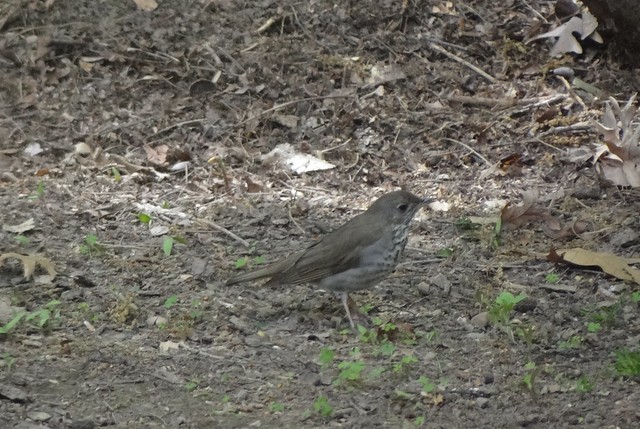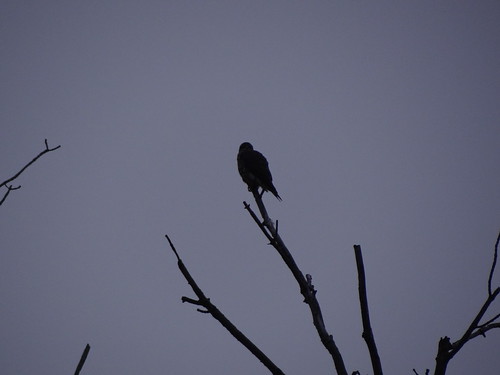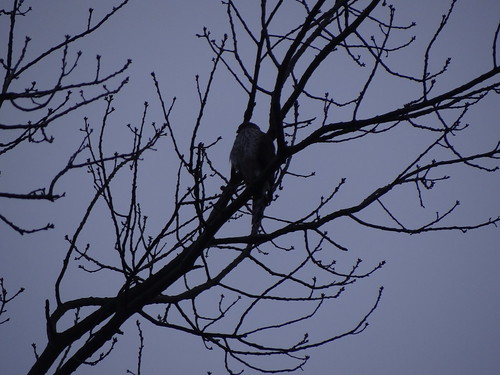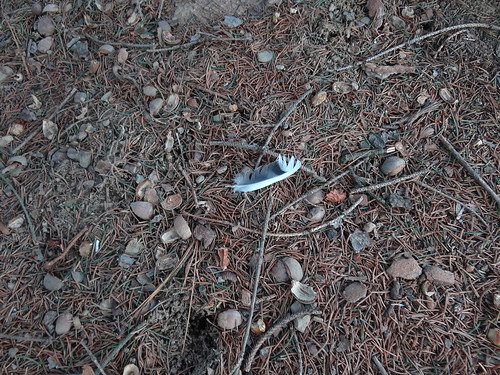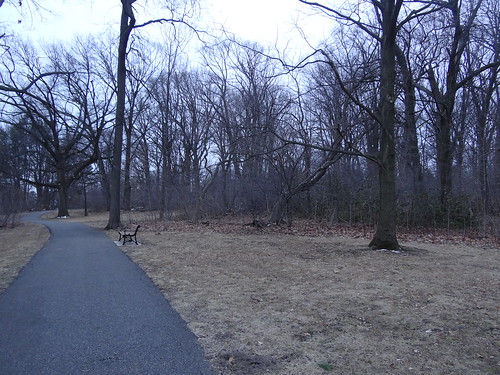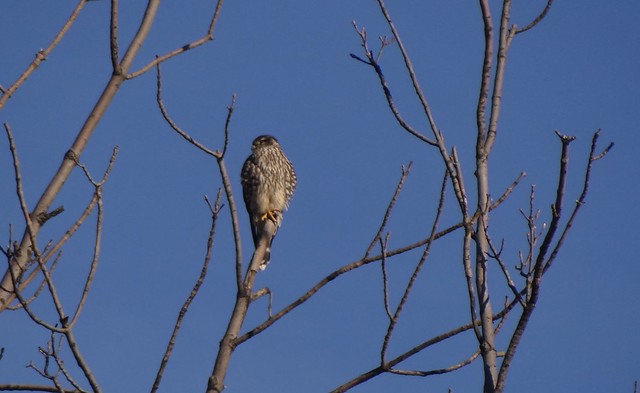This is Montclair State University’s copy of John Francis McDermott‘s edition of the 1843 journal of Edward Harris, friend, patron, and frequent field companion of John James Audubon.
Like most of that library’s general natural history titles from mid-century, this book was a gift from J. D’Arcy and Anne Ardrey Northwood, familiar names indeed in Pennsylvania and New Jersey birding circles: D’Arcy was the first curator of Mill Grove, and the couple’s “ramshackle cottage” at Cape May would eventually become New Jersey Audubon’s Northwood Center.
But this particular volume has another layer of provenance, attested by the inscription to D’Arcy Northwood from Eleanor Darrach Sippington. Good old Google helped me pin her down as one of the six children of Susannah Ustick Harris and Alfred Darrach; Susannah Harris was one of the four children of Edward Harris and his second wife (and first cousin), Mary G. Ustick.
What made my smile especially broad on reading the inscription was the fact that I had the pleasure of dinner with another of Harris’s descendants a couple of years ago in the Bahamas. She is certainly too young to have known her cousin Eleanor, but the connection shows once again just how small the world of birding can be, not just in space but over time.

